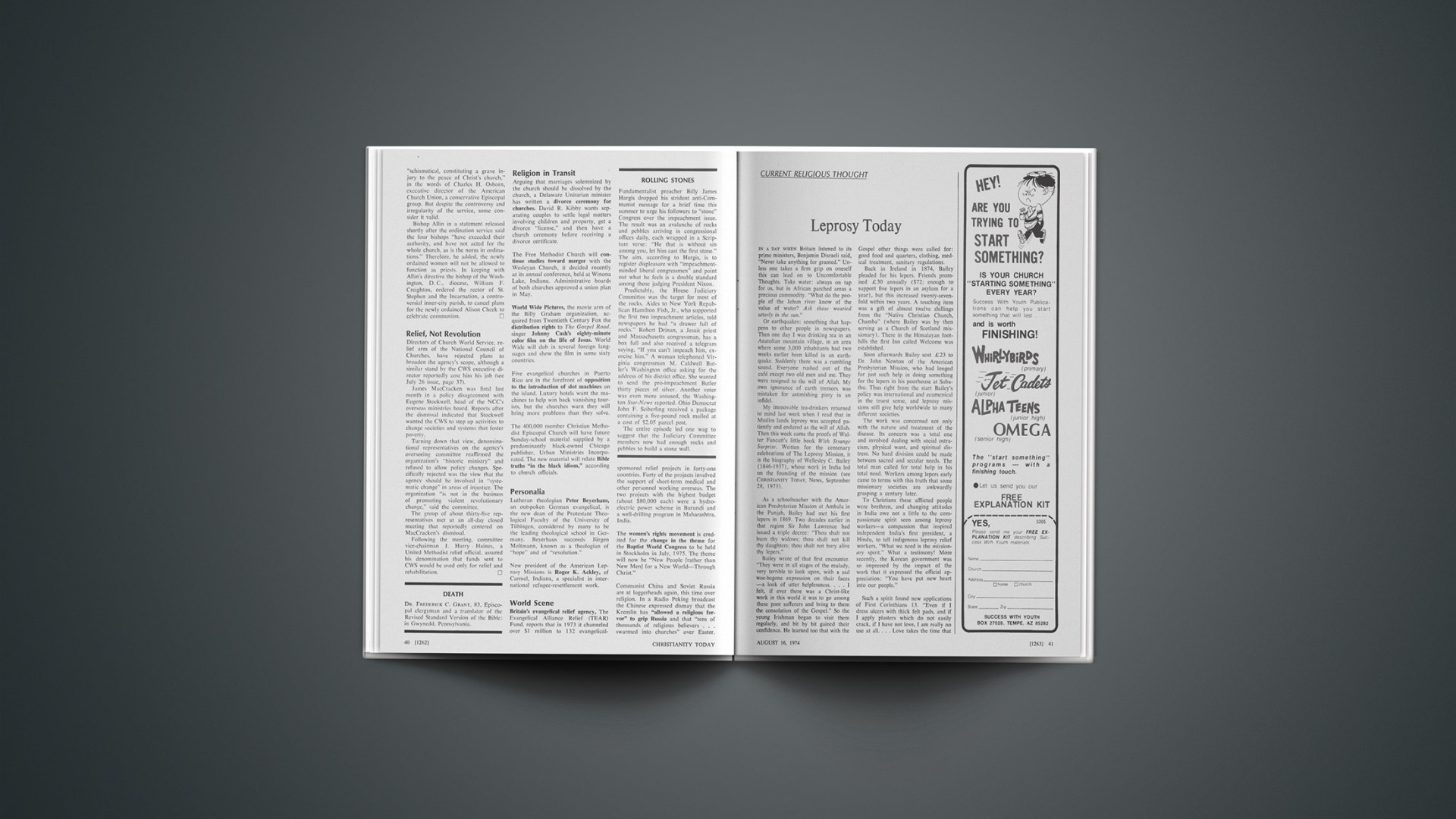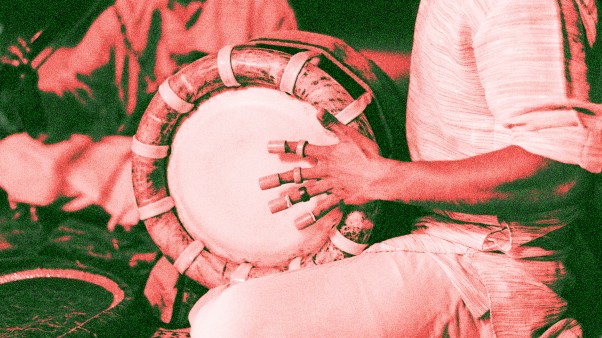In a day when Britain listened to its prime ministers, Benjamin Disraeli said, “Never take anything for granted.” Unless one takes a firm grip on oneself this can lead on to Uncomfortable Thoughts. Take water: always on tap for us, but in African parched areas a precious commodity. “What do the people of the Jehun river know of the value of water? Ask those wearied utterly in the sun.”
Or earthquakes: something that happens to other people in newspapers. Then one day I was drinking tea in an Anatolian mountain village, in an area where some 3,000 inhabitants had two weeks earlier been killed in an earthquake. Suddenly there was a rumbling sound. Everyone rushed out of the café except two old men and me. They were resigned to the will of Allah. My own ignorance of earth tremors was mistaken for astonishing piety in an infidel.
My immovable tea-drinkers returned to mind last week when I read that in Muslim lands leprosy was accepted patiently and endured as the will of Allah. Then this week came the proofs of Walter Fancutt’s little book With Strange Surprise. Written for the centenary celebrations of The Leprosy Mission, it is the biography of Wellesley C. Bailey (1846–1937), whose work in India led on the founding of the mission (see CHRISTIANITY TODAY, News, September 28, 1973).
As a schoolteacher with the American Presbyterian Mission at Ambala in the Punjab, Bailey had met his first lepers in 1869. Two decades earlier in that region Sir John Lawrence had issued a triple decree: “Thou shalt not burn thy widows; thou shalt not kill thy daughters; thou shalt not bury alive thy lepers.”
Bailey wrote of that first encounter. “They were in all stages of the malady, very terrible to look upon, with a sad woe-begone expression on their faces—a look of utter helplessness.… I felt, if ever there was a Christ-like work in this world it was to go among these poor sufferers and bring to them the consolation of the Gospel.” So the young Irishman began to visit them regularly, and bit by bit gained their confidence. He learned too that with the Gospel other things were called for: good food and quarters, clothing, medical treatment, sanitary regulations.
Back in Ireland in 1874, Bailey pleaded for his lepers. Friends promised £30 annually ($72; enough to support five lepers in an asylum for a year), but this increased twenty-even-fold within two years. A touching item was a gift of almost twelve shillings from the “Native Christian Church, Chamba” (where Bailey was by then serving as a Church of Scotland missionary). There in the Himalayan foothills the first Inn called Welcome was established.
Soon afterwards Bailey sent £23 to Dr. John Newton of the American Presbyterian Mission, who had longed for just such help in doing something for the lepers in his poorhouse at Subathu. Thus right from the start Bailey’s policy was international and ecumenical in the truest sense, and leprosy missions still give help worldwide to many different societies.
The work was concerned not only with the nature and treatment of the disease. Its concern was a total one and involved dealing with social ostracism, physical want, and spiritual distress. No hard division could be made between sacred and secular needs. The total man called for total help in his total need. Workers among lepers early came to terms with this truth that some missionary societies are awkwardly grasping a century later.
To Christians these afflicted people were brethren, and changing attitudes in India owe not a little to the compassionate spirit seen among leprosy workers—a compassion that inspired independent India’s first president, a Hindu, to tell indigenous leprosy relief workers, “What we need is the missionary spirit.” What a testimony! More recently, the Korean government was so impressed by the impact of the work that it expressed the official appreciation: “You have put new heart into our people.”
Such a spirit found new applications of First Corinthians 13. “Even if I dress ulcers with thick felt pads, and if I apply plasters which do not easily crack, if I have not love, I am really no use at all.… Love takes the time that is necessary to solve individual problems. Love does not speak impolitely to the patients or herd them around like animals; it tries at all times to restore the patient’s sense of dignity.… Love endures forever. But as for methods of treatment they shall be changed. Research results may sometimes be contradicted. Even leprosy, one day, will vanish away.… However for now there is DDS [diamino-diphenyl-sul-phone], reconstructive surgery, and love, these three; but the greatest of these is love.”
Peculiar difficulties still beset the work. Government attitudes are often equivocal. Sufferers are often denied schooling, housing, employment. Leprosy is not strictly a killing disease, and developing countries have high priorities in other areas. Patients, because of the nature of their disease, are slow to present themselves for treatment, for a stigma attaches to leprosy. Many sufferers are hidden from official eyes and never appear in statistics.
Leprosy still rouses fear, prejudice, and superstition in backward communities, and sufferers may be driven out and become beggars. Said a doctor serving in Asia: “All female and 80 per cent of our male patients believe their leprosy is due to a curse from God. They regard their situation as hopeless.” If leprosy is indeed held to be a divine punishment, such outcasts must feel rejected by both God and man. Can we imagine what this must mean?
The disease itself presents difficult medical problems: confinement to man; almost inaccessible pockets of infection; insidious onset; very varied human response. But enough is known about leprosy—transmission, diagnosis, treatment, prevention—to bring new hope to most of the world’s estimated fifteen million sufferers. The development of effective new drugs means that progressive deformity is no longer inevitable, and the disease may become an incident in life rather than a life experience.
Nevertheless the conquest of leprosy is still in the pious-hope category for 80 per cent of sufferers today. It is not just a matter of staffing, though doctors, nurses, physiotherapists, and administrators are always badly needed. New knowledge is not always being applied. “The Christian Church and men of goodwill,” says Dr. S. G. Browne of London, “in spite of their admirable recent record, have failed to tackle this problem … with the determination and the resource that its importance and gravity demand.… We know enough—but we are not doing enough.” Perhaps this is because we whose lines are set in the pleasanter places of God’s world take the absence of leprosy for granted.










